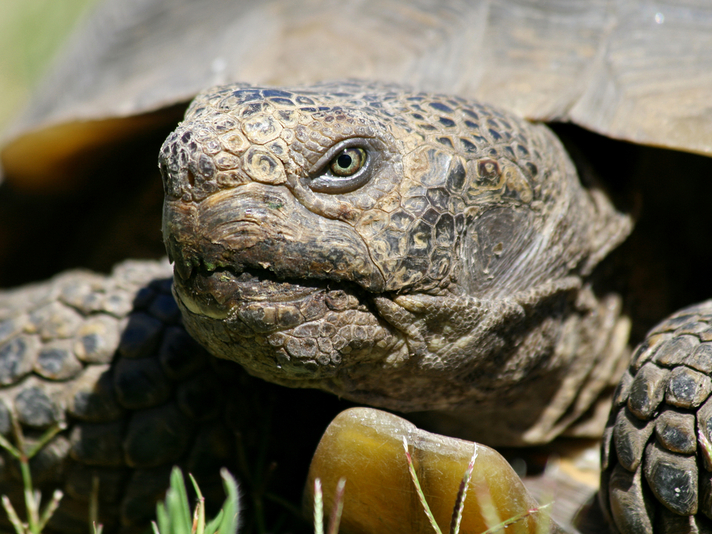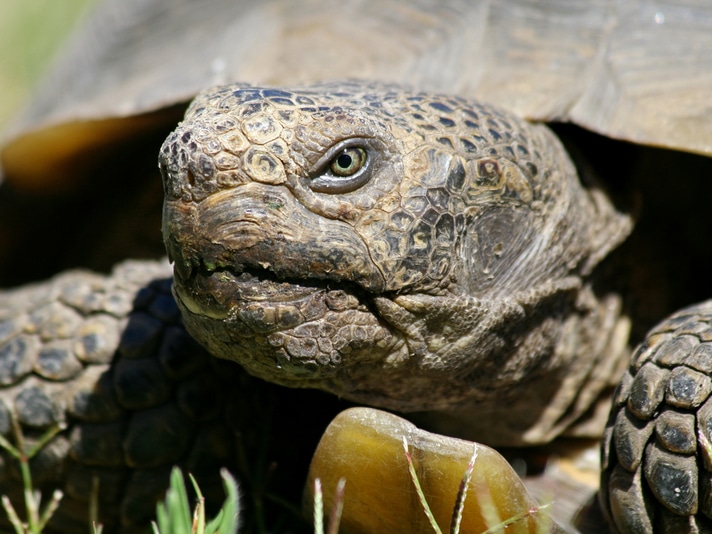Desert tortoises range from the Mojave and Sonoran deserts in California and can also be found in Arizona, Nevada, and areas in Mexico.
A public lands bill in Congress that would result in the auctioning off of 40,000 acres of public land (62 square miles) would destroy habitat of the desert tortoise (Agassiz's desert tortoise, Gopherus agassizii, Morafka's desert tortoise, Gopherus morafkai), reptiles protected under the Endangered Species Act.

Ryan M. Bolton/shutterstock
Desert tortoises range from the Mojave and Sonoran deserts in Southern California and can also be found in Arizona, Nevada, as well as in areas in Mexico.
According to the Center for Biological Diversity (CBD), Clark County officials in Nevada are pushing the bill, which the CBD says would essentially give lands away to developers and utilities, while gutting the protections enjoyed by the keystone species.
The Center and the Desert Tortoise Council, the Endangered Species Coalition, Friends of Sloan Canyon, Friends of Gold Butte, Western Watersheds Project, WildEarth Guardians, Basin and Range Watch, and the Amargosa Conservancy and more than 3,300 citizens have sent letters to Clark County commissioners in opposition to the bill.
“This bill will be a disaster for desert tortoises just so developers can make another quick buck from desert sprawl,” Patrick Donnelly, Nevada state director at the Center for Biological Diversity said in a statement released by the organization. “Clark County is also peddling a dangerous precedent that would allow politicians, rather than scientists, to decide the fate of endangered species around the country. That’s not what the public wants.”
According to the CBD, any proposals for expanded development must go through an environmental review from the U.S. Fish and Wildlife Service. That review, which CBD says is very rigorous, must also include input from other scientific experts not affiliated with the USFWS.
Herping California's Mojave Desert for the Desert Tortoise
California’s Desert Tortoise Gains 11 Square Miles of Habitat
These reviews would look at the potential negative impacts such developments would have on the desert tortoise that also requires public input and disclosures of any potential harms. The review also requires the county to ensure that any development doesn’t impact the viability of the desert tortoise.
The CBD, however, says that the Clark County resolution would include exemptions and carveouts that would effectively cut the USFWS out of the review process. This would give the county the power to come up with its own measures to make up for any habitat destruction.
Desert tortoises, a threatened species, range from the Mojave and Sonoran deserts in Southern California and can also be found in Arizona, Nevada, as well as in areas in Mexico. It grows to about 8 to 10 lbs. and eats mostly weeds and leafy weeds in the wild. The desert tortoise is a protected species and it is speculated that more desert tortoises can be found in captivity than in the wild.



